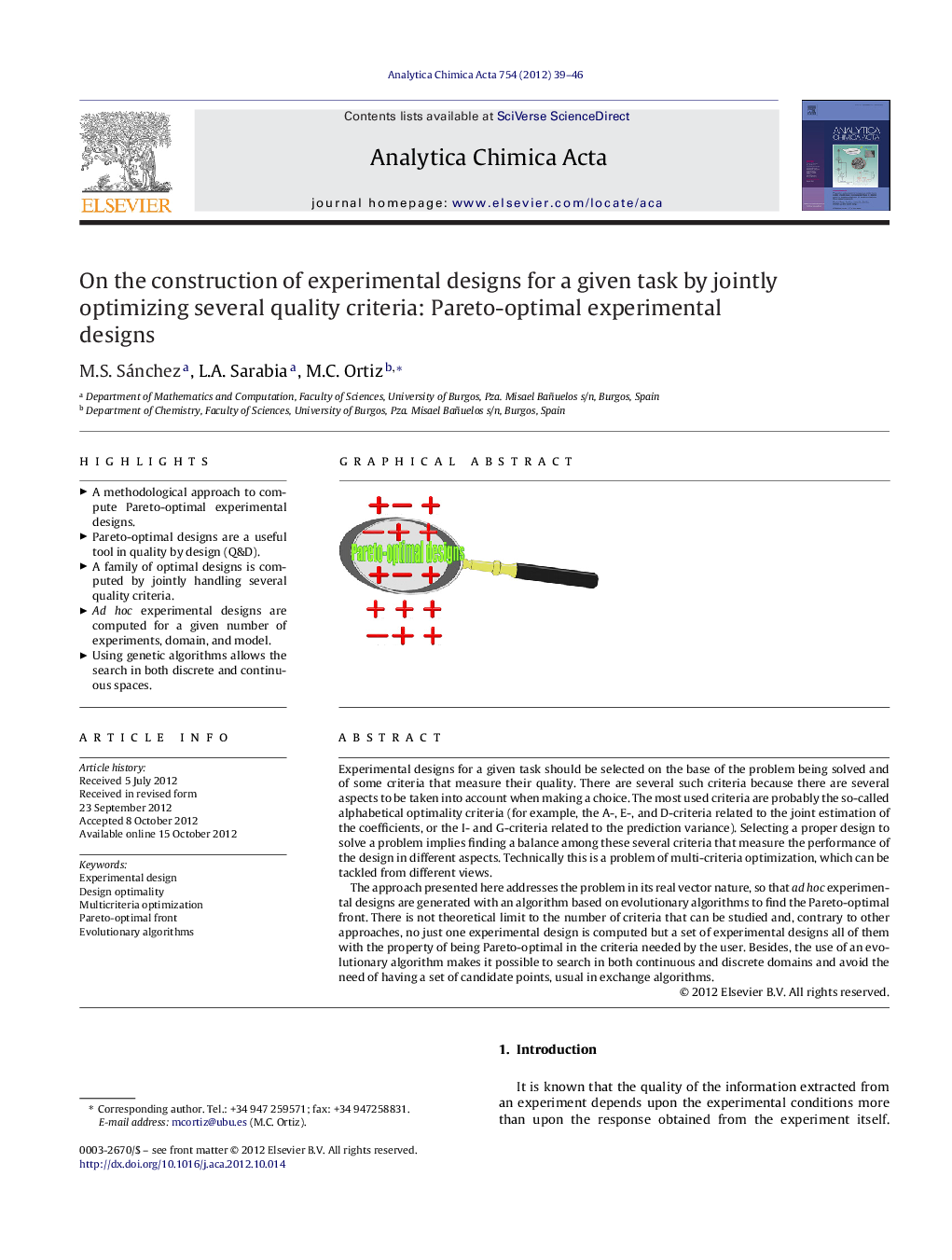| Article ID | Journal | Published Year | Pages | File Type |
|---|---|---|---|---|
| 1165386 | Analytica Chimica Acta | 2012 | 8 Pages |
Experimental designs for a given task should be selected on the base of the problem being solved and of some criteria that measure their quality. There are several such criteria because there are several aspects to be taken into account when making a choice. The most used criteria are probably the so-called alphabetical optimality criteria (for example, the A-, E-, and D-criteria related to the joint estimation of the coefficients, or the I- and G-criteria related to the prediction variance). Selecting a proper design to solve a problem implies finding a balance among these several criteria that measure the performance of the design in different aspects. Technically this is a problem of multi-criteria optimization, which can be tackled from different views.The approach presented here addresses the problem in its real vector nature, so that ad hoc experimental designs are generated with an algorithm based on evolutionary algorithms to find the Pareto-optimal front. There is not theoretical limit to the number of criteria that can be studied and, contrary to other approaches, no just one experimental design is computed but a set of experimental designs all of them with the property of being Pareto-optimal in the criteria needed by the user. Besides, the use of an evolutionary algorithm makes it possible to search in both continuous and discrete domains and avoid the need of having a set of candidate points, usual in exchange algorithms.
Graphical abstractFigure optionsDownload full-size imageDownload as PowerPoint slideHighlights► A methodological approach to compute Pareto-optimal experimental designs. ► Pareto-optimal designs are a useful tool in quality by design (Q&D). ► A family of optimal designs is computed by jointly handling several quality criteria. ► Ad hoc experimental designs are computed for a given number of experiments, domain, and model. ► Using genetic algorithms allows the search in both discrete and continuous spaces.
